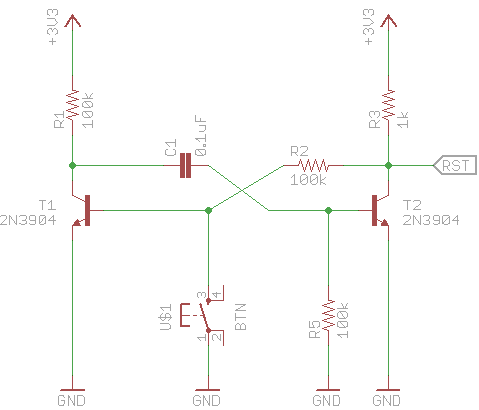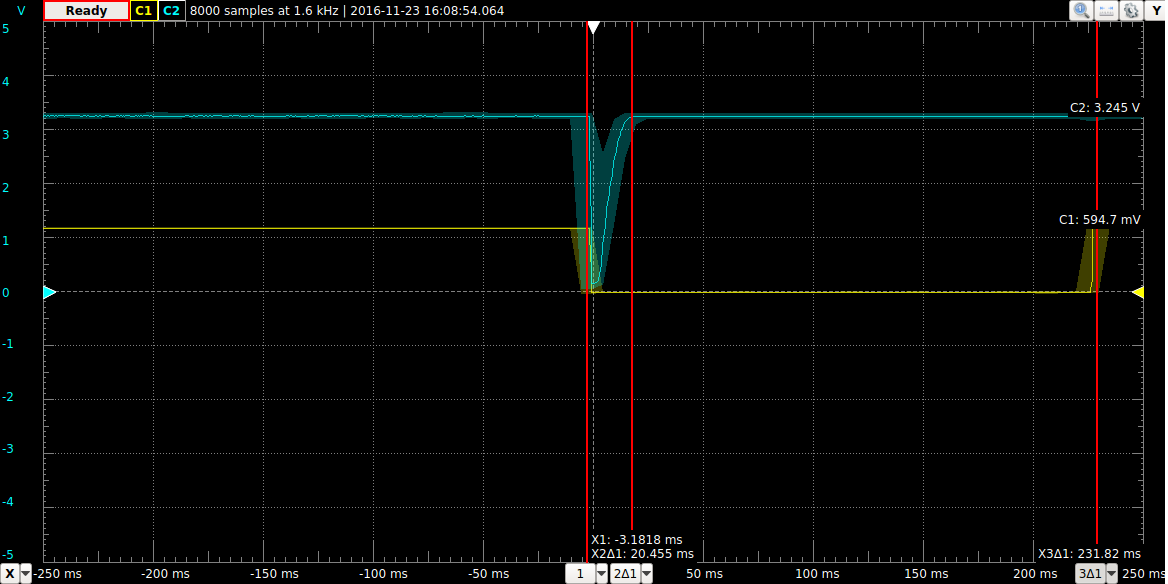I am designing a hobby project that will run on a battery so I am trying to reduce power consumption. The SoC I am using has the ability to go into a deep sleep mode where it consumes very little power, and then can be interrupted by a falling edge on a pin.
I want to generate a high-low-high pulse when the state of a reed switch changes in either direction. I have been reading a lot and it seems that a one-shot monostable circuit can be built from a couple of transistors and an RC circuit to generate an output pulse when an edge is detected. I understand how that works. However, I can't figure out the best way to also pulse on the opposite edge.
One thought, was to just combine two one-shots that are configured to trigger on rising and falling edges respectively, and use the transistors at the output to pull the common pull-up low (kind of like a NOR gate).
Since I am a hobbyist, I am mostly using passive components. What is the "real" way of doing this in a low-power configuration using logic devices?
Edit: I figure I should mention something about the timing requirements. Normally the reed switch will be either open or closed for many seconds at minimum before changing states.
Edit: Here is an example of the circuit I was using for detecting only the falling edge:
And here is the ~20ms pulse it was producing for ~200ms button press simulating the reed switch (Channel 1 is Vbe for T1 and Channel 2 is measured at RST):


